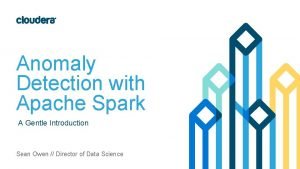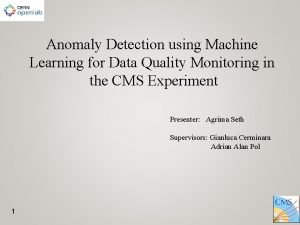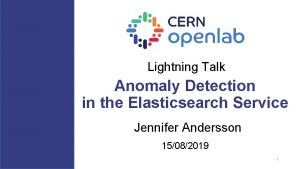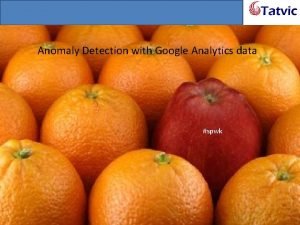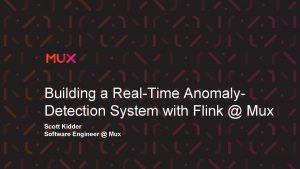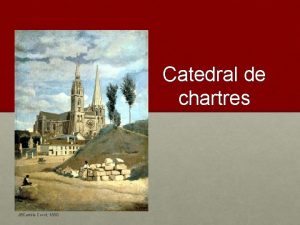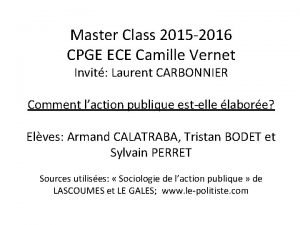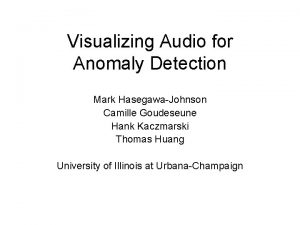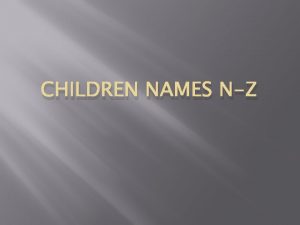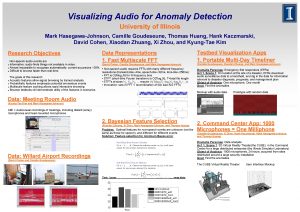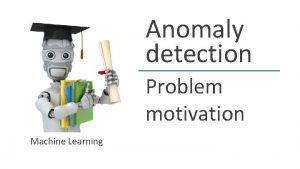Visualizing Audio for Anomaly Detection Mark HasegawaJohnson Camille









- Slides: 9

Visualizing Audio for Anomaly Detection Mark Hasegawa-Johnson, Camille Goudeseune, Hank Kaczmarski, Thomas Huang, David Cohen, Xiaodan Zhuang, Xi Zhou, and Kyung-Tae Kim

Research Goals Problem: Microphones are cheap, yet they are rarely used in security installations. Interactive browsing is difficult: Audio is hard to browse much faster than real-time Automatic acoustic event detection (AED) is nearly useless: many false alarms Proposal: Best of both worlds Use probabilistic features (AED) to color-code audio segments, guiding analysts to pieces worth closer study

Dataset #1: Meeting Room Audio 30 annotators, 24 hours of data, 14 acoustic events

Dataset #2: Willard Airport 24 hours of audio, `labeled' by commercial airplane takeoff & landing records (inadequate!)

Data Representations #1: Multiscale FFT Problem: Short-time Fourier transforms with sizes N 1, N 2, N 3, … require O{T(log 2 N 1+log 2 N 2+log 2 N 3+. . . )}, T=audio filesize, N=FFT size Solution: XN(2 k) = XN/2, 1(k)+XN/2, 2(k)

Data Representations #2: Bayesian Feature Selection Problem: Best features for nonspeech acoustic event detection are unknown (different from speech), different for different classes of acoustic events Solution: Select the best features from a big pile, according to a minimum-Bayes-risk selection criterion

Testbed #1: Portable Multi-Day Audio Timeliner Dramatis Personae: Emergency first responders (EFRs) Analysis Object: One microphone, one month Act 1, Scene 1: EFRs arrive on scene, download surveillance audio to a handheld Objective: Event diagnosis, prognosis, & management

Testbed #2: 1000 Microphones = One Milliphone Dramatis Personae: Command center data analysts Analysis Object: 1000 microphones, 24 hours Act 2, Scene 1: Analyst in a Virtual Reality Theater (the Beckman CUBE) seeks anomalies in a large dataset Objective: Find the anomalies

Conclusions: Current Status of this Research, August 18 2009 Results so far Meeting room audio: transcription nearly complete. Airport audio: no transcriptions. Data representations, Testbeds: separate prototypes exist Ongoing research Insert (Data Representations) into (Testbeds) Create new data representations in order to improve testbed visualization Formal human subject tests
